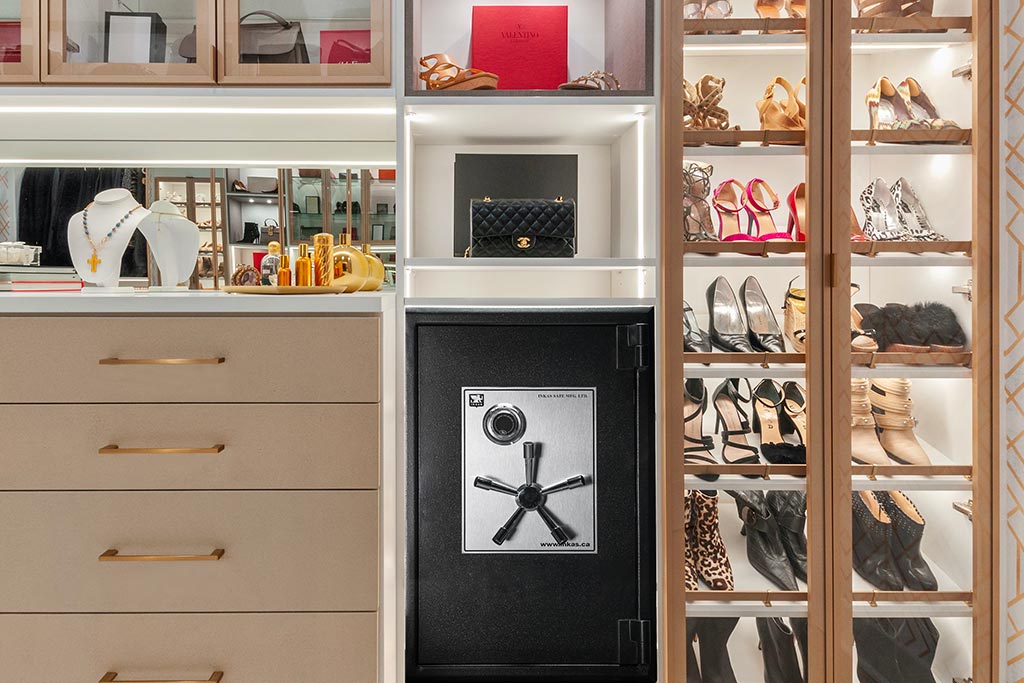
The average homeowner has several items that should be stored in a protected location. But your typical bedroom dresser or kitchen drawer, while convenient, leave your valuables exposed. Utilizing a residential safe in your home can create a secure location to protect against burglary, fire, flooding, and other unexpected events.
An in-home safe is an ideal location to house your personal documents, jewelry, passports, cash, and firearms. But before purchasing a safe to be placed in your home, you should understand the many options available and what constitutes a quality safe.
Key Features Your Next Residential Safe Should Have
Once you begin your search for a new safe, you will come across products with enticing price tags. But most of those safes are crafted with poor-quality materials and lack industry certifications, resulting in a safe that is easily breakable and anything but a secure location.
So check these first: any quality safe will come with a UL (Underwriters Laboratories) certification for at least the locking mechanism. Also ensure that any safe you are planning to buy has a burglary rating and fire rating. Many cheap alternatives will not have these ratings due to the extensive testing a safe must undergo to receive them.
Finally, any residential safe worthy of consideration should come with a warranty. Purchasing a safe is an investment in the security of your items. With a warranty provided with your safe, you can rest assured that your items can remain protected if an unforeseeable event occurs.
Types of Residential Safes
Now that you know what to look for in a quality safe, the next step in buying one is determining which type of safe best meets your needs. With safes configured in multiple sizes and security features, residential safes can be broken down into 5 categories:
- Burglary Safe: is a safe that is designed to be able to withstand constant pressure and attacks from standard burglar tools. These safes come with a TL (tool rating) score, which indicates how long the safe can defend against hand tools, power tools, cutting torches, explosions, and other typical burglar methods. These safes can come in various sizes, ideal for housing cash, personal documents, or other high-value items.
- Fire Safe: while any quality safe will have a fire rating, choose a safe to defend against the damage of fires with a resistance level of at least 1-2 hours. These safes will have a rating of at least a UL-TL of 15 or more, ensuring your items will be protected.
- Security Safe: this category of safes provides the highest protection against burglar attempts, fire, and other circumstances. These safes are created with a composite material along with a thicker door and wall, providing the highest level of UL ratings a safe can obtain.
- Jewelry Safe: ideal for securing heirloom jewelry, designer jewelry, family gold, and silver pieces. Due to the inclusion of internal trays and shelves, your jewelry can be stored safely while maximizing the space in your safe.
- Gun Safe: designed to provide storage solutions for firearms, ammunition, and accompanying accessories. A quality gun safe will be able to defend against entry attempts while providing fire protection. Low-quality gun safes may have a fire rating but, due to poor construction, will not be able to withstand impact forces or prying attempts.
Smart Integration in Residential Safes
Embracing Technology for Enhanced Security
- Remote Access and Control:
- Safes equipped with Wi-Fi or Bluetooth, allowing for remote locking and unlocking.
- Ability to monitor access logs via smartphone apps.
- Real-time Alerts and Notifications:
- Immediate alerts for unauthorized access attempts or tampering.
- Notifications for environmental changes inside the safe (humidity, temperature).
- Integration with Home Automation Systems:
- Compatibility with smart home platforms for centralized control.
- Voice control capabilities through devices like Amazon Alexa or Google Assistant.
- Backup and Recovery Features:
- Digital backup for combinations or key codes.
- Remote troubleshooting and technical support.
Impact of Home Insurance Policies on Safe Selection
Understanding the Financial Benefits of Owning a Safe
- Reduced Premiums:
- Many insurance companies offer reduced premiums for homes with certified safes.
- The level of discount can vary based on the safe’s specifications and security rating.
- Increased Coverage Limits:
- Safes can lead to higher coverage limits for valuables stored within.
- Specific conditions or safe types might be required for this benefit.
- Documentation Requirements:
- Keep records of the safe purchase and its specifications for insurance purposes.
- Periodic appraisals of stored valuables may be required.
Conclusion
A well-designed residential safe offers security that a traditional filing cabinet, drawer, or cheap safebox lacks during unforeseen disasters. Choosing a home safe that is UL-certified ensures the safe is constructed with quality material to protect against burglary, flooding, and fires. Whether you choose a burglary, fire, security, jewelry, or gun safe to have in your home, UL-certified INKAS® Safes provides premium security with its line of products.
Get in touch with one of our dedicated team members to find the perfect safe to fit your needs and protect your valuables today.

